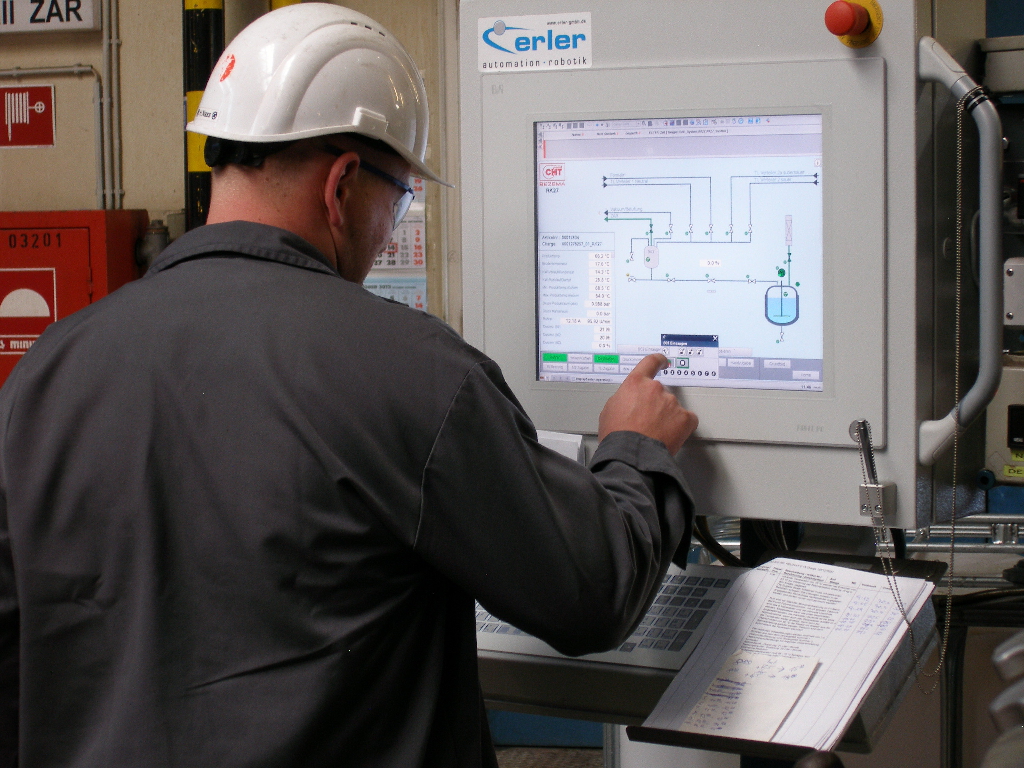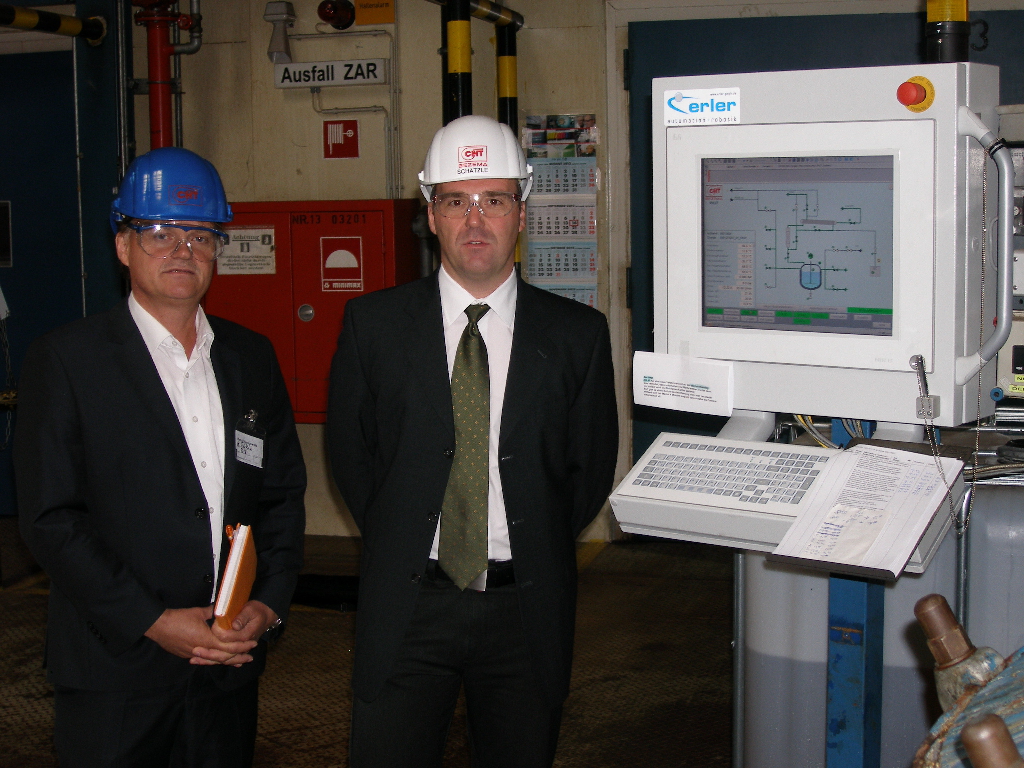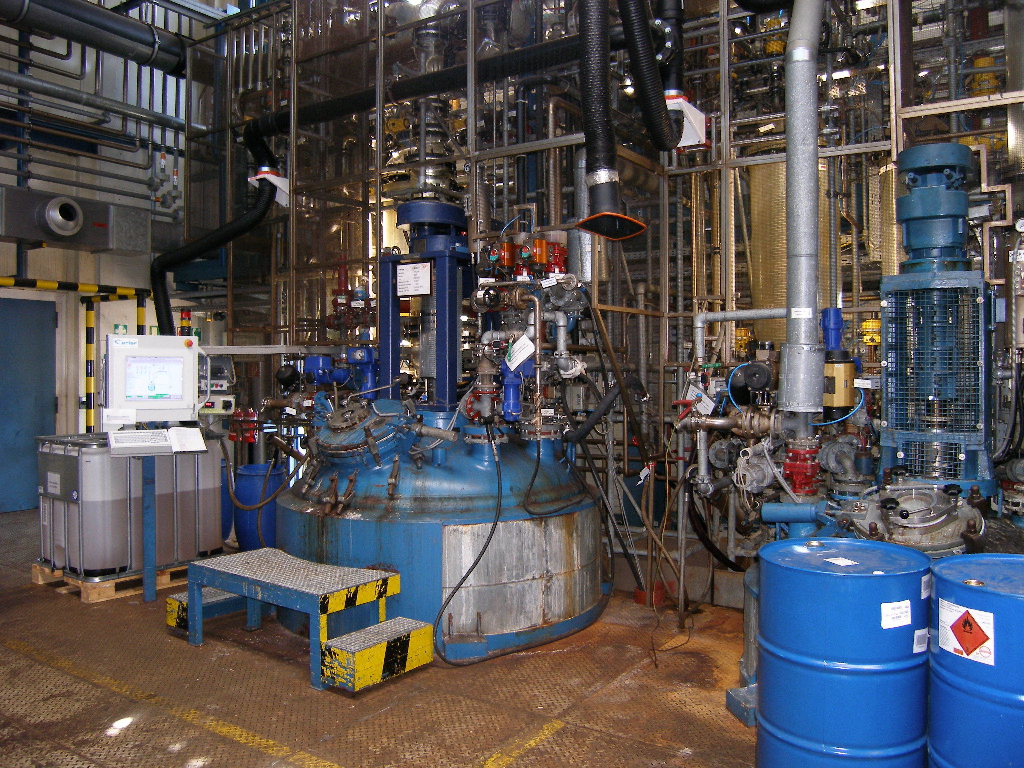
Companies, particularly medium-sized enterprises, cannot afford excessive production outages in the course of modernizing the control technology used in their processing systems. Migrating to a new solution step by step can be the answer to maximizing system availability and avoiding extended or unplanned downtime, as demonstrated by a recent migration project at specialty chemical producer CHT/BEZEMA. In order to succeed at this, however, the process control system and control technology need to support the stepwise approach – as exemplified by the B&R solution.
"We've improved the reliability of our processes and the quality of our products, and we're now able to react more quickly and flexibly to changing market requirements," reports Günther Schätzle, head of production engineering at CHT R. BEITLICH. This was made possible by modernizing the processing stations at the company's key production site, the factory in Dusslingen, Germany, with B&R technology.
"A solution like B&R's APROL is especially popular with midsized companies like CHT," adds Schätzle, "because it allows us to minimize the risk involved in system migration." Unlike other process control solutions, APROL doesn't cater solely to big industry and its fully automated recipe approach. This was welcome news for CHT, because a system migration was becoming increasingly urgent.

In addition to the APROL process control system, CHT is also adopting B&R's X20 control system. The new solution includes a total of 46 Power Panel HMI units from along with countless other control and I/O modules B&R.
Premium specialty chemicals from 68 stations
From its origins as a supplier of textile chemicals, CHT has expanded its business to include specialty chemicals in the areas of textiles, textile care, construction chemicals and performance chemicals. The company's customer-oriented product development continues to expand an already broad spectrum of products. The majority of the CHT's revenue comes from very complex products, which are produced primarily at the production and logistics center in Dusslingen.
The Dusslingen site is home to 68 processing stations, including 10 higher-level supply systems, 40 mixing vessels and 14 chemical reactors. Many of the production stations are multifunctional and can be used to produce up to 100 different products.
Migration objective: Increased efficiency
"It was becoming increasingly apparent that our systems for control, HMI and operating data acquisition, which had grown over the course of many years, would soon no longer be able to keep up with the intensifying demands on product quality, quality assurance, process reliability and safety regulations," says Schätzle, explaining CHT's motives for beginning the migration process early in 2011. "What is more, our outdated technology was preventing us from filling new orders."
It took three days, for example, just to install a new valve and get it up and running. The increasing frequency of age-related equipment failure and difficulty obtaining replacement components were further arguments in favor of migration.
The objective was to replace the control, HMI and data acquisition systems, which had become outdated, inflexible and prone to failure, with state-of-the-art new technology. "Fully automating everything was certainly not our primary goal," adds Schätzle, "as that would have been too complex for our multifunctional stations."

CHT's process sequences are much easier to analyze with APROL. TrendViewer and AuditTrail now permit analysis of processes that couldn't even be observed with previous solutions.
The APROL process control system stands out
CHT formed a team of experts to perform an in-depth evaluation of three different process control systems, as well as control and HMI solutions from two bidders, based on an exhaustive matrix of specific criteria. In the end, B&R came out on top.
For Schätzle, the arguments supporting this decision were clear. "One of the decisive factors was that B&R's APROL – in contrast to the other very well known, widely used systems we evaluated – provides optimum support for stepwise migration. APROL allowed us to move our production stations successively to the new process control system while keeping the old systems running in parallel."
The CHT experts especially valued the newfound independence from Windows. B&R's process control and HMI technology is based on Linux, and the structure of the process control system is remarkably clear and intuitive.
B&R hardware perfectly scaled to the system structure
B&R's finely graduated selection of control and HMI products has allowed CHT to match the performance of each system's PLC to its requirements, as well as equip each system with a unique lineup of I/O modules and its own HMI unit. It was this flexibility that led the chemical producer to rely on B&R for control and HMI in addition to the process control system.
"The advantage is that we can mirror the actual system structure directly in the control and HMI technology, which helps us implement the stepwise migration perfectly from a hardware perspective," explains Schätzle. He continues, "Another argument in favor of a single source solution is the lack of problems with interfaces and communication."
Schätzle concedes that a solution from a large German control supplier would also have allowed CHT to equip each of its stations with a separate controller. "Yet this would only have been possible in a roundabout way or with the aid of a soft PLC, both of which were out of the question for us," he explains.
The CHT manager sees very few disadvantages to switching suppliers for its process control system and control technology. "We would have had to rewrite a significant portion of our software anyway since 50% of the code we've accumulated over the years is now unused, which would make reusing the software virtually impossible."
From a cost perspective, Schätzle sees little difference between the solutions evaluated. "There were some considerable differences in the offers we received from systems integrators," says Schätzle, "yet the price estimates for the respective process control solutions varied by no more than 20%." This is likely due to the strongly decentralized structure of the production stations, which can be represented ideally by the distributed structure selected for the process control system.

"APROL allows us to monitor and document our processes, giving us clearer insight into the complex interrelationships." Günther Schätzle (r.), head of production engineering at CHT R. BEITLICH
APROL provides flexibility through openness
For CHT, selecting a systems integrator was about more than the bid price alone. More importantly, the integrator would need to be willing and able to accommodate the needs of a specialty chemical producer, especially with regard to additional changes throughout the course of the project. Of the five systems integrators in question going into the evaluation phase, Erler came out on top.
"Going into the project we were well aware of the scope and complexity of the task at hand. Since we had no previous experience with APROL, we were initially a bit skeptical as to whether this system was up to the challenge," explains Alois Erler. "Our doubts faded quickly over the course of the project, however."
The migration process also went more smoothly than expected, as Erler confirms: "APROL is very open compared to other process control systems, which allows us to react very flexibly to customer requirements even when a project is already underway. We were also very pleased with how easy it was to link up to the existing legacy system. That went astoundingly well."
The first migration took place in late 2011 on an immensely complex pilot station with around 360 digital and 20 analog I/O channels, and since then a new production station has been migrated nearly every week. By the second quarter of 2013, all 68 stations at the Dusslingen plant had been completely migrated to APROL, and the old process control system was shut down for the last time. CHT's new solution includes 46 Power Panel HMI units, just under 70 X20 controllers and a total of around 14,000 digital and 1,000 analog X20 I/O channels, as well as various shift supervisor stations connected via VNC. The system includes two runtime servers, one engineering server and a VNC server secured by a disaster recovery system. The redundant Linux-based production network communicates with Windows devices on the corporate network via a clearly defined interface.

Double redundancy guarantees availability
"We have even incorporated double redundancy," adds Schätzle. Every component in a station can be reached via two bus systems: an operator bus and a process bus. Each bus can take over for the other if it becomes necessary. In addition, each station is equipped with two ports that can back each other up. This ensures the high availability that the stations demand.
Before the migration was even complete, it was clear that CHT had found more than simply a replacement for the old system. "The APROL system is significantly more flexible, and we can now have a new valve up and running in a matter of hours rather than days. Any changes to the software can also be reversed with a single click if an error is detected."
Analyzing process sequences is also a much simpler task these days. "With TrendViewer and AuditTrail, we found that we were able to analyze processes that we didn't have access to before," explains Schätzle. "APROL lets us analyze interactions between processes in real time in order to implement process optimizations on the spot. Failed batches can be tracked and analyzed later on based on the logged process data."
One way that CHT uses this additional information is to analyze and reduce energy consumption. "We now also have the option of controlling critical process values individually to further increase the safety of the stations, especially with regard to processes that require certification.
Utilizing savings potential with APROL EnMon
CHT is looking to take advantage of the additional savings offered through energy management by becoming one of the first users of the brand new EnMon library for APROL.
"We are absolutely satisfied with the progress of the migration so far, and it hasn't cost half of what a fully automated solution would have. The stepwise approach, the parallel operation of the APROL and legacy systems, and routing via a data concentrator – all that hardly affected our production, and we had no data loss whatsoever," says Schätzle, pleased. "This system allows us to react more flexibly and quickly to the latest developments and implement changes cost-effectively. The positive results have convinced us to continue the migration to APROL for more of our production sites."